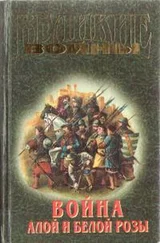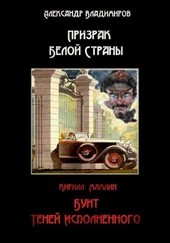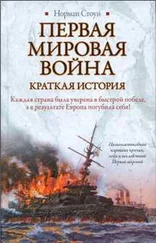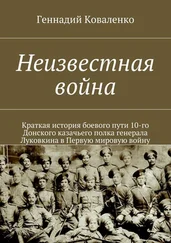W. Worcestre. The Boke of Noblesse, ed. J. G. Nichol. London: The Roxburgh Club, 1860. P. 76–78.
Lander. Crown and Nobility. P. 13.
См.: Льюль Рамон . Книга о любящем и возлюбленном. Книга о рыцарском ордене. Книга о животных. Песнь Рамона / Ред. В. Е. Багно. СПб.: Наука, 1997; 2-е изд. 2003 (Литературные памятники). Разница в написании имени обусловлена тем, что традиционное Раймонд Луллий восходит к средневековой латыни, а Рамон Льюль — к каталанскому языку. — Прим. науч. ред.
C. Nall. The Production and Reception of Military Texts in the Aftermath of the Hundred Years War. University of York, D. Phil. Thesis. 2004.
Слово chevauchée в английском военном лексиконе XIV века служило эвфемизмом для грабительского набега на чужую территорию, в том числе и для крупномасштабных королевских кампаний Эдуарда III во Франции.
S. Payling . War and Peace: Military and Administrative Service amongst the English Gentry in the Reign of Henry VI // P. Coss, Ch. Tyerman (eds.). Soldiers, Nobles and Gentlemen: Essays in Honour of Maurice Keen. Woodbridge: Boydell and Brewer, 2009. P. 240–260.
C. Richmond. The Nobility and the Wars of the Roses, 1459–61 // Nottingham Medieval Studies. 21 (1977). P. 71–85. Автор благодарен Г. Кляйнеке за обсуждение этого труда Ричмонда и замечания по его поводу.
Lander. Crown and Nobility. P. 24.
M. Mercer. The Medieval Gentry: Power, Leadership and Choice during the Wars of the Roses. London: Continuum, 2010. P. 25–33.
The National Archives, PROB11/7, f. 212.
Gillingham. Wars of the Roses. P. 28.
A. Goodman. The Wars of the Roses: The Soldiers’ Experience. Stroud: Alan Sutton, 2005. P. 220.
V. Fiorato et al. (eds.). Blood Red Roses: the Archaeology of a Mass Grave from the Battle of Towton. Oxford: Oxbow Books, 2007. P. 172.
По другим данным, напротив, войско Йорков уступало числом армии Ланкастеров, что логично предположить в свете потерь в битве при Барнете тремя неделями ранее.
Commynes . Memoirs. P. 195.
Goodman. Wars of the Roses. P. 196.
Literae Cantuarienses. Vol. 3. P. 274–285.
R. L. Storey. The End of the House of Lancaster (2 nd ed.). Stroud: Alan Sutton, 1999. P. 1–28.
L. C. Attreed (ed.) . The York House Books 1461–1490. Stroud: Alan Sutton, 1991. Vol. 2. P. 9–10.
Ibid. Vol. 1. P. 390–391.
M. D. Harris (ed.) . The Coventry Leet Book, 1420–1555 // Early English Text Society 134–135, 138, 146 (1907–13). Vol. 1. P. 304–319, 353–358, 362–371.
M. Bateson (ed.) . Records of Borough of Leicester. London: C. J. Clay and Sons, 1901. Vol. 2. P. 279.
J. Watts. Public or Plebs: the Changing Meaning of ‘The Commons’, 1381–1549 // Power and Identity in the Middle Ages. P. 250.
Ibid. P. 250.
D. Rollison. A Commonwealth of the People: Popular Politics and England’s Long Social Revolution, 1066–1649. Cambridge: Cambridge University Press, 2010. P. 139.
R. Virgoe . The Death of William de la Pole, Duke of Suffolk // C. Barron, C. Rawcliffe, J. Rosenthal. (eds.) . East Anglian Political Society and the Political Community of Late Medieval England. Norwich: Centre for East Anglian Studies, 1997. P. 253.
A. Curry (ed.). Henry VI: Parliament of 1449 November. Text and Translation // PROME. Item 15.
W. Scase. Literature and Complaint in England 1272–1553. Oxford: Oxford University Press, 2007. P. 135.
Storey. End of the House of Lancaster. P. 197.
C. Richmond. Propaganda in the Wars of the Roses // History Today. 42 (1992). P. 12–18.
Ориг.: The Catte, the Ratte and Lovell our dogge rulyth all Englande under a hogge , где Catte (кошка) — это Кэтсби, Ratte (крыса) — Рэтклифф, а hogge (боров) — личная эмблема Ричарда в виде кабана. Для королевского камергера Фрэнсиса Лоуэлла едкий сатирик животного не нашел, но под dogge (собакой), вероятно, подразумевается его герб в виде серебристого волка.
Ross . Richard III. p. xxxiii; York House Books. Vol. 1. P. 350.
См.: Кёнигсбергер Гельмут . Средневековая Европа: 400–1500 годы. М.: Весь мир, 2001. С. 294–295. Цитаты из Фортескью по этому изданию. Следует отметить, что подход Джона Фортескью отличается пропагандистским характером и служит формированию мифа об уникальности английского парламента. См.: Хеншелл Николас . Миф абсолютизма. Перемены и преемственность в развитии западноевропейской монархии раннего Нового времени. СПб.: Алетейя, 2003. С. 120, 148, 228–229. — Прим. науч. ред.
Sir John Fortescue . The Governance of England, ed. Charles Plummer. Oxford: Oxford University Press, 1926. P. 114–115.
G. L. Harriss. Crown, Parliament and Public Finance in Medieval England to 1369. Oxford: Oxford University Press, 1975. P. 517.
D. Pearsall. Crowned King: War and Peace in 1415 // Stratford J. (ed.) . The Lancastrian Court. Stamford: Shaun Tyas, 2003. P. 163–172.
W. M. Ormrod. The Western European Monarchies in the Later Middle Ages // Richard Bonney (ed.). Economic Systems and State Finance. Oxford: Oxford University Press, 1995. P. 147–151.
Читать дальше
Конец ознакомительного отрывка
Купить книгу






